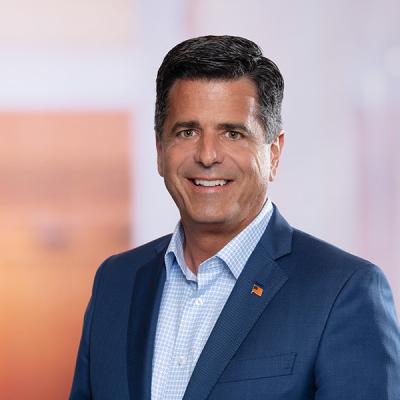FY2017 Massachusetts Budget Update: The House Budget
In a unanimous vote of 156-0, the Massachusetts House of Representatives approved a $39.56 billion spending plan for FY2017 on April 27. Over three days, the House considered more than 1,300 amendments to pass a final budget that allocates approximately $10 million more than Governor Baker’s spending plan, but closely resembles his proposals.
Like Governor Baker’s budget, the House budget does not include any new taxes or tax increases. The House plan would only increase state spending by approximately 3%, a rise similar to last year’s. However, the House budget adds more money for local education aid than Baker’s proposal, including a $55 per pupil increase in education funding. Total local and education funding would increase by $159 million.
Ultimately, the House added more than $86 million in spending through nine consolidated amendments to the original budget proposed by the House Ways and Means Committee and its Chairman, Representative Brian Dempsey. These amendments were approved by the full House with minimal debate. The largest addition to spending was $19.9 million for amendments related to education and local aid. Further additions made through the amendment process include $16.1 million for labor and economic development, $15.3 million for social services and veterans, and $10.9 million for public safety and the judiciary. Compared to last year’s consolidated amendments, the House was approximately $4.7 million more frugal in their additions.
The House budget plan includes major investments in substance abuse treatment, reimbursement rates for early education providers, homelessness services and other health and human services. It adopts reforms proposed by Governor Baker to cap MassHealth spending increases at 5%, and also adds a measure for state compliance with the federal Real ID Act. Budget highlights include:
Health Care
- The House budget includes $15.4 billion for MassHealth programs, providing coverage to millions of members. This funding adopts reforms by Governor Baker to limit spending growth to 5%, while maintaining member benefits and eligibility.
- Although Baker proposed cutting $15 million from the Health Safety Net, which reimburses hospitals for care provided to poor, uninsured, or underinsured patients, the House budget added this $15 million back to the budget.
- Of particular note for hospitals, the House budget preserves the June 30, 2022, sunset established by the Ways & Means Committee for Baker’s new $250 million hospital tax. Lawmakers also approved a consolidated amendment to sunset the transfer of $250 million from the Health Safety Net in June 2022. The House rejected an amendment that would have increased both the hospital tax and health safety net shortfall each by $50 million, which was strongly opposed by the Massachusetts Hospital Association.
- The House also approved an amendment to create a commission to study the practice of insurers and pharmacy benefit managers around changing drugs for non-medical reasons. The commission is directed to produce a report evaluating the role of financial incentives, cost to the state, and the most impacted patient populations, among other criteria.
Public Health and Human Services
- As the Commonwealth continues to respond to the opioid addiction problem, the House budget has increased funding for substance addiction services by more than 65%since FY2012.
- Proposed funds will add $28 million for substance addiction programs, as well as 45 new addiction treatment beds at Taunton State Hospital. The budget will also provide case management services to an additional 500 clients per year.
- The House also approved an initiative that would authorize pharmacists to administer injectable drugs for substance abuse and mental health with the goal of increasing medication adherence.
Education & Local Aid
- In comparison to Governor Baker’s budget, the House budget differs most in education and local aid, increasing the current year’s budget by over $159 million. This includes a $55 per pupil increase in education funding, which is more than double the amount for FY2016.
- The House budget provides targeted investments to support the early education workforce, including a $15 million salary reserve, $18.6 million for full-day kindergarten programs, and $2 million for access to early education programs.
- Budget provisions maintain full funding of the state’s share of the Special Education Circuit Breaker and increase investments in Regional School Transportation and Charter Schools.
- The budget devotes $9 million to STEM specific funding, including $4.8 for STEM starter academies, which work to improve performance in related subjects and connect students with STEM fields of employment.
- The House also gives a 1%increase in funding to the University of Massachusetts, state universities, and community colleges. This reflects a trend of increasing state funding to public higher education institutions over the last several years. State Rep. John Velis, D-Westfield, also secured an earmark to help Westfield State University create a new service center on campus for military students, veterans, and their families.
Transportation
- In a move that caught some Democrats off guard, the House added a budget measure sponsored by Republican leadership that would bring Massachusetts into compliance with the federal Real ID Act. Signed by President Bush following the 9/11 terrorist attacks, the Act requires states to begin issuing secure and compliant forms of identification that will replace the current drivers’ licenses of many residents. Officials from the Baker administration recently briefed lawmakers on a bill filed by the Governor last October to bring Massachusetts into compliance, as residents may have to start carrying their passports to access federal buildings or travel through domestic airports by January if no action is taken this year.
Judiciary
- The House budget provides a $1 million increase to civic legal aid and a $2.8 million increase to expand specialty court sessions across Massachusetts. However, the Massachusetts Judiciary is unhappy with the budget, as the courts received $14 million less than requested.
Funding Sources
- House leaders emphasized this is the second consecutive year in which the budget does not include any new taxes or tax increases. Furthermore, lawmakers did not rely on any direct transfers from the state’s rainy day fund to help balance the budget.
- The House rejected an amendment to raise the gas tax by 3 cents per gallon and avoided a vote on reducing the sales tax to 5%, instead voting to study the issue.
Next Steps
All eyes are now on the Senate to release their version of the budget in May. This will be the second budget authored by Senate Ways and Means Chairwoman Karen Spilka. Following Senate passage, a sixmember conference committee will meet to resolve the differences between the final House and Senate versions. The budget will then go back to each branch for voting, finally landing on the Governor’s desk. Baker must sign it before July 1, the start of the next fiscal year.
ML Strategies will continue to monitor the budget process as we approach the start of the new fiscal year on July 1, as lawmakers further develop their spending plan for FY2017.
![]()
Authors

Julie Cox
Steven A. Baddour
ML Strategies - Executive Vice President & Director of Operations
Daniel J. Connelly
ML Strategies - Senior Vice President and Compliance Officer



